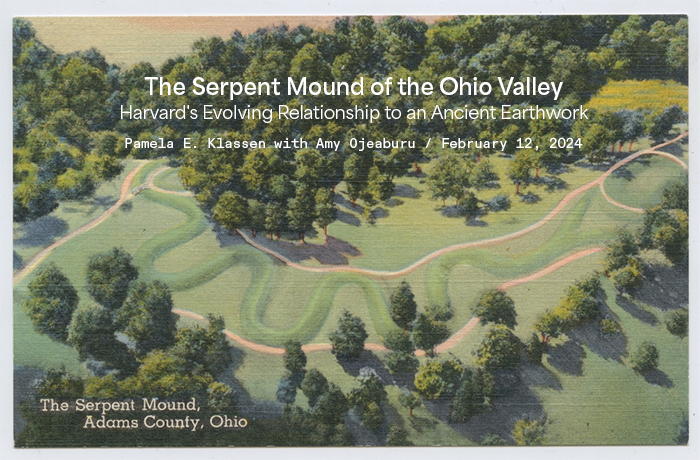A close look at Harvard’s complex relationship to an ancient Indigenous monument.
The Serpent Mound is an ancient earthwork created by Indigenous peoples in southern Ohio between one to two millennia ago.
This story map explores how Harvard University came to own Serpent Mound in the decades after the US government removed Indigenous peoples from Ohio by force and by treaty. Harvard’s relationship to Serpent Mound exemplifies the nineteenth-century quest among professional and amateur archeologists to preserve and understand the meaning of ancient earthworks via archaeological excavation and religious interpretation, often ignoring Indigenous understandings of these places.
In this story map, we discuss Indigenous ancestors removed from their resting places by Harvard archaeologists who excavated burial mounds and cemeteries. Some of the ancestors are still held by Harvard's Peabody Museum, which is undertaking an active repatriation program.
Pamela Klassen and Amy Ojeaburu have carefully researched and conveyed the story of Frederic W. Putnam, the second curator of the Peabody Museum, and his fascination with—and acquisition of—the Serpent Mound.
VISIT STORYMAP: THE SERPENT MOUND OF THE OHIO VALLEY
Contributor Bios
Pamela Klassen is professor in the Department for the Study of Religion at the University of Toronto. In 2022–2023, she was the William Lyon Mackenzie King Visiting Professor in Canadian Studies at the Weatherhead Center for International Affairs, and she taught undergraduate seminars in the Department of English and the Committee on the Study of Religion at Harvard College.
Amy Ojeaburu is a junior studying philosophy and women, gender, and sexuality studies at Harvard College. She was Pamela’s student in the class "Truths & Reconciliations," as well as her research assistant.

